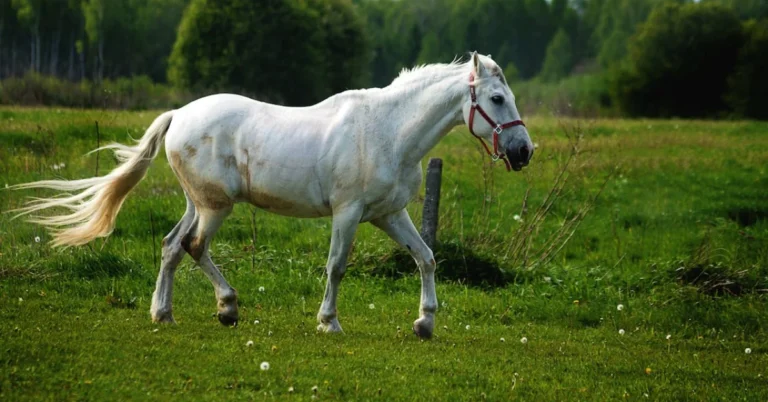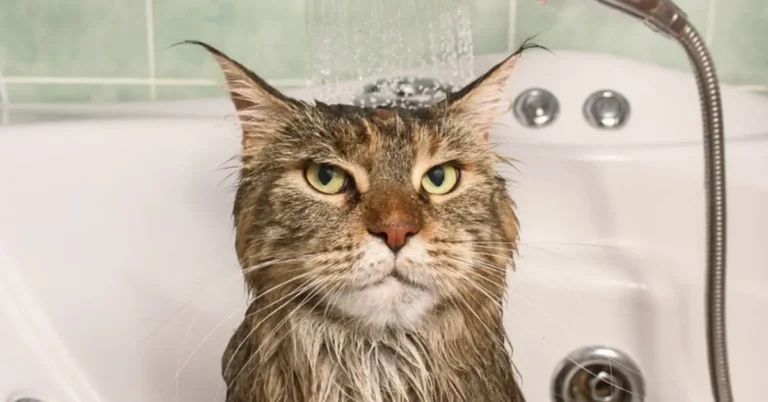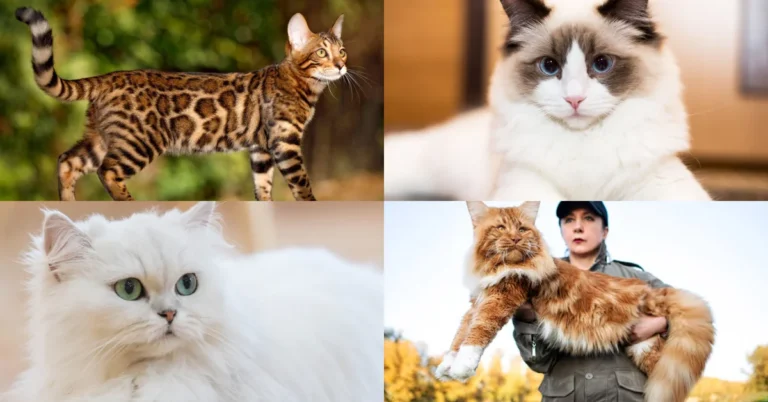There are 5 types of poodles, With their lush hypoallergenic coats, foxlike faces, and prancing gaits, Poodles capture human hearts no matter the silhouette. But beyond the curly locks and captivating charm, Poodles are the most popular dog breeds and boast tremendous versatility as the ultimate family dog, therapy animal, performance breed, and athletic competitor.
To provide a thorough introduction, this article will spotlight the histories, statures, personalities, and care requirements of the five poodle types. Read on to gain essential poodle knowledge and discover what might be the best fit for your family.
1. The Majestic Standard Poodle
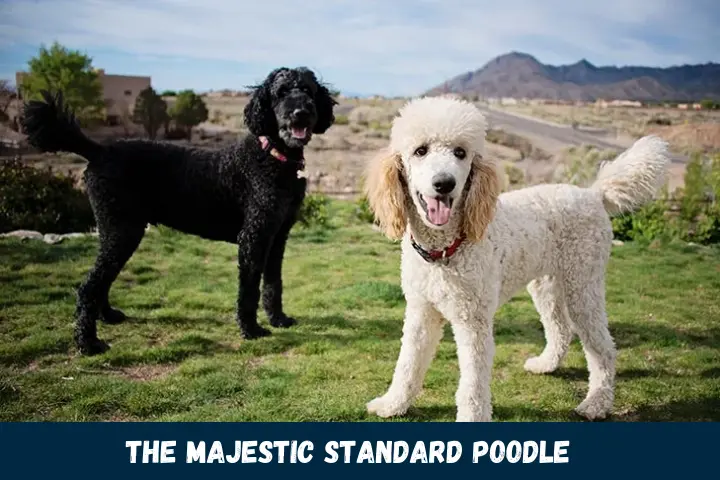
The standard poodle is the foundation poodle variety from which the others stemmed. Originally bred as water retrievers in Germany due to their intelligence and athleticism, these poodles have an average height of 15 inches or more at the shoulder. Weighing 45 to 70 pounds, the standard is the largest poodle size.
With their regal stance and air of intelligence, it’s no wonder the standard poodle became a beloved companion of nobility across Europe. Today, standard poodles are still prized as show dogs, guide dogs, assistance dogs, performers, and loving family companions thanks to their people-pleasing personalities, trainability, and longevity. Properly cared for, standard poodles enjoy life spans of 10 to 13 years.
Though quite active, standard poodles can adapt well to apartment living provided their considerable exercise needs of one to two 30-60 walks or high-energy play sessions per day are met. Their coats also require thorough brushing two to three times per week as well as professional grooming every four to six weeks.
The standard poodle’s elegant yet playful temperament combined with its trainability and hypoallergenic coat make this an exceptional family dog. Just be ready to match their activity levels and invest ample time in grooming!
2. The “Mini-Me” Miniature Poodle
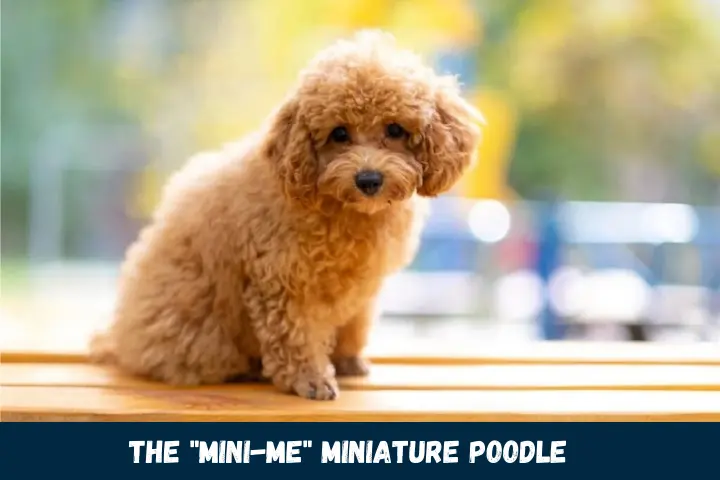
As suggested by its name, the miniature poodle is simply a smaller version of the standard, thought to have been originally developed in either Germany or France. Though pedigrees weren’t kept until the 20th century, miniatures emerged as an official variety in the 1930s.
Standing 11 to 15 inches tall at the shoulder, miniature poodles weigh a petite 15 to 17 pounds. Though more delicate than standards, miniatures retain impressive athleticism and energy condensed into a travel-friendly size. They share the same tight curly hypoallergenic coat as standards which requires regular brushing and professional trimming every four to six weeks.
In terms of lifespan, miniature poodles live slightly longer than standards, from 14 to 16 years. Their intelligence, tr, inability, and friendliness have also made them suitable for therapy work, trick training, and athletic canine sports.
The miniature poodle’s smaller size makes it better suited to city living and smaller dwellings than the standard variety. But miniatures still require 30 to 60 minutes of vigorous daily exercise such as fast-paced w, talks, runs, or intense playtime. Match their energy levels and t, and these adaptable, people-focused poodles will return unconditional love while thriving by your side for years to come.
3. The Pint-Sized Toy Poodle
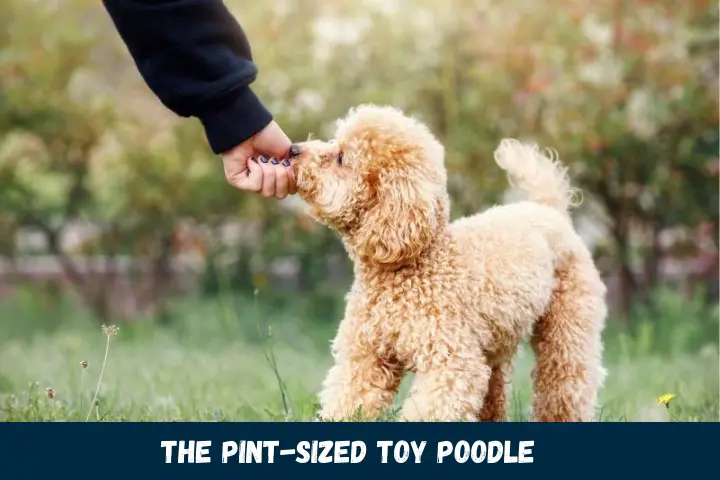
The toy poodle packs all the poodle personality into a truly petite package, standing no taller than 10 inches at the shoulder. Though toy poodles weigh only 4 to 6 pounds However grown, these little athletes have plenty of energy. Don’t let their tiny size fool you!
Like other poodles, toys were originally bred in Germany—likely by crossing small poodles with other diminutive breeds like Havanese or Maltese. The goal was to develop a sophisticated but portable companion suited for city living.
And toy poodles filled that niche beautifully! Their small stature, playfulness, tra, inability, and minimal shedding make them ideal house dogs. Toy poodles live the longest of all poodle types at as many as 18 years, though 14 years is more typical.
Toy poodles require less exercise than larger sizes, but at least 20 minutes of vigorous daily activity is important for their health and happiness. Their cute “teddy bear” cuts al, so require regular brushing and professional grooming every four to eight weeks. Provided their minimal exercise needs are met, toy poodles thrive in any home, including apartments.
Some key things to know about toy poodles: they experience separation anxiety when left alone for long periods, and their tiny bladders can make house dog training challenging. But their deeply devoted personalities make these minor hassles easy to overcome!
4. What is a Teacup Poodle? Controversy and Care Tips

The teacup poodle is likely the most misunderstood and controversial poodle type. Unlike the standard, miniature, and toy varieties recognized by the American Kennel Club, there are no officially accepted size parameters for teacup poodles. Typically weighing 4 pounds or less, “teacup” is an unofficial marketing term used to describe extra-small toy poodles.
Teacup poodles are bred to be as minuscule as possible. However such extreme breeding can cause severe health problems including low blood sugar, weak immune systems, skeletal issues, hydrocephalus, and generally short lifespans of 7 to 10 years. Reputable breeders never intentionally breed teacups due to concerns over breeding ethics and canine welfare.
However, teacup poodles certainly have plenty of appeal at first glance! Their doll-like size and soft puppy traits tap straight into human cuteness radar. However prospective owners should carefully weigh ethical factors tied to teacup breeding practices. Adopting healthier undersized toy poodles is often a wiser choice. That said, committed owners desiring tiny teacup poodles should take special precautions:
5. The Alluring Medium Poodle
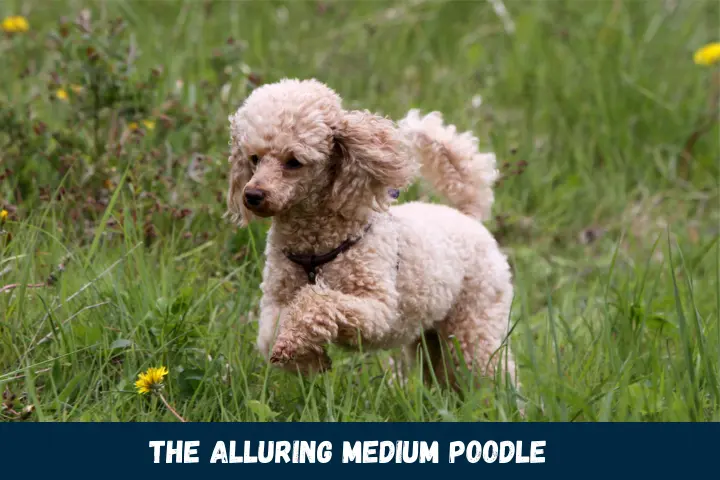
Like the “Goldilocks” of poodle varieties, the medium poodle is the “just right” compromise between the stately standard and portable toy sizes—and is quickly rising in popularity because of it! Averaging 35 to 45 pounds in weight and standing 11 to 15 inches tall, medium poodles blend portability with athleticism and also boast the longest lifespans along with toys at 14 to 18 years.
Since they’re not yet recognized as an official AKC variety like standards, miniatures, and toys, there are not yet strict size parameters for mediums. They’re often simply bred as “oversized miniatures” or “small standards.” Their coats have a similar tight curly texture requiring regular upkeep with brushing and professional grooming every four to six weeks.
Because of their middle size, medium poodles can readily adapt to any living situation from spacious houses to studio apartments while needing less exercise than standards. But like all poodles, they still require at least 30 to 60 minutes of daily vigorous exercise via walks, runs, hiking, or demanding play.
Medium poodles offer the best combination of agility, trainability, easygoing family-friendly temperament, longevity, moderate grooming needs, and middle stature attractive to many poodle lovers! Medium poodles never cease to charm thanks to their perfect balance.
Similarities Between the 5 Poodle Types
While the poodle types differ considerably in size, there are several signature traits and needs they have in common:
All poodle coats—regardless of size variety—have a signature dense curly hypoallergenic texture that hardly sheds yet requires regular brushing and professional grooming every four to eight weeks.
- Poodles all rank among dogkind’s smartest breeds and are readily trainable animals. They thrive when challenged mentally with canine sports, trick training, or puzzle toys.
- The poodle temperament across all sizes tends to be people-focused, biddable, highly active, and very loyal, forging exceptionally close bonds with primary caretakers.
- Poodles of all varieties demand 20 to 60 minutes of vigorous indoor play or outdoor exercise like brisk leashed walks daily. Without adequate activity, they are prone to boredom and developing nuisance behaviors like excessive barking or furniture chewing.
An emphasis on early socialization and training to stop barking, a high-quality diet, regular veterinary care, dental care and yearly examinations to catch health issues early helps ensure long lifespans across poodle varieties. Investing in preventative care maximizes lifespans.
The Ideal Poodle Companion For Your Lifestyle
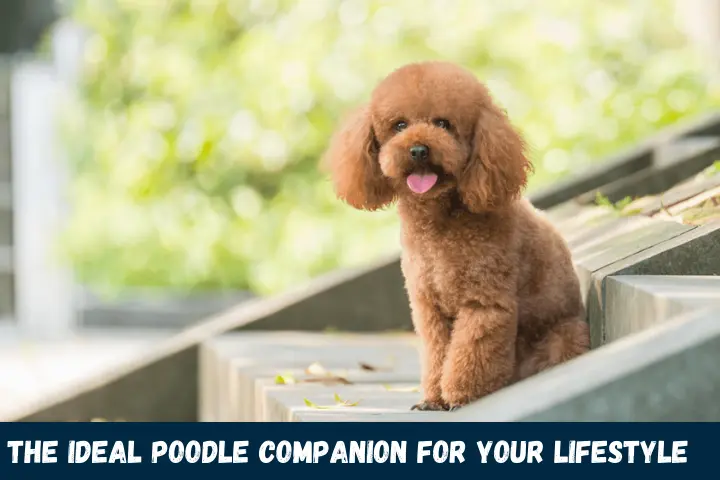
Choosing your perfect poodle involves careful consideration of factors like size preference, activity level, space constraints, and grooming commitments. Review the snapshot below to help weigh which poodle variety aligns with your household and lifestyle:
- Standard: Best suited to active homes able to provide considerable time exercising, space to roam, and grooming investment. Lifespan 10-13 years.
- Miniature: Adaptable to a range of lifestyles yet still energetic, requiring vigorous exercise and grooming upkeep. Lifespan 14-16 years.
- Toy: The smallest/longest living poodle yet still energetic and requiring some grooming investment. Ideal for urban apartments. Lifespan 14-18 years.
Caring For Your Poodle: Diet, Exercise & Grooming Essentials
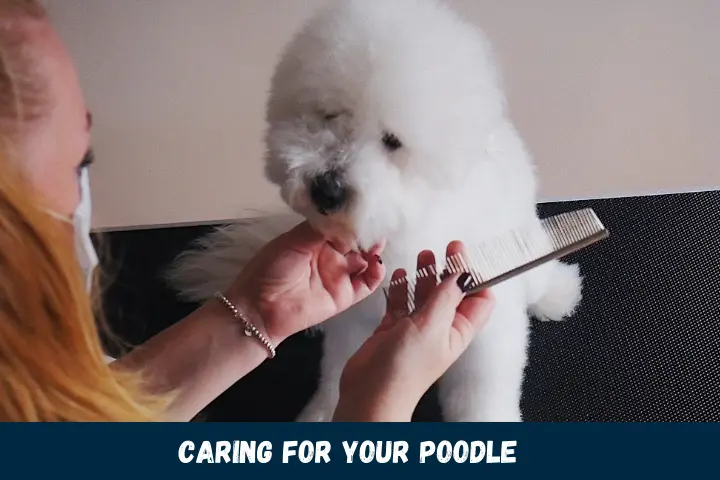
Bringing home an energetic poodle puppy or adopting a poodle is thrilling. But the real work begins after welcoming one of these intelligent canines into your life and home. All poodle types have some core care requirements to understand regardless of their size. Read on for an overview of poodle care essentials related to nutrition, exercise, and grooming needs.
Crafting the Optimal Poodle Diet
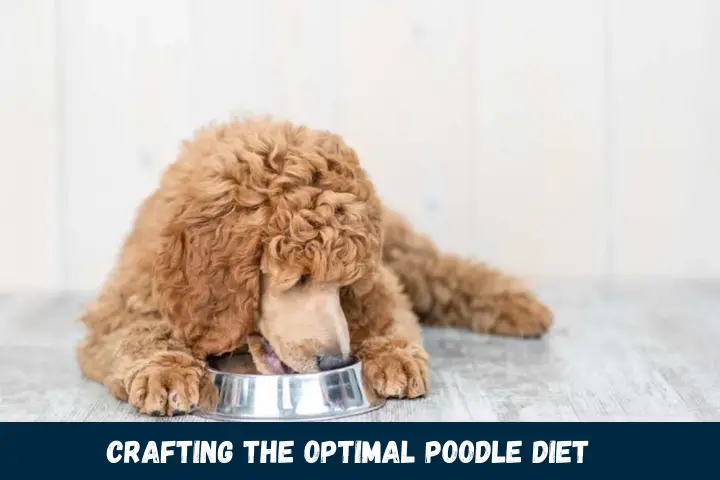
Like any dog, poodles thrive best on nutrient-dense whole-food diets. But their exceptionally active natures and vulnerability to bloat (a potentially fatal twisting of the stomach) necessitate specialized nutrition considerations. Follow these poodle feeding tips:
- Feed scheduled meals instead of free-feeding to monitor intake and prevent obesity which strains joints.
- Choose an age-appropriate premium-quality kibble formulated specifically for energetic medium-to-large calm dog breeds. Or opt for freshly made, gently cooked or raw food diets formulated by canine nutritionists. Avoid generic or budget big-box store kibble.
- Prevent bloat by feeding two to three small meals spaced evenly instead of one large meal. Restrict high-fat treats, exercise one hour before and after eating, and consider a slow-feed bowl.
- Medium to large breed puppy food supports healthy bone growth in the first 12-18 months. Then graduate adult poodles to adult poodles or all life stage formulas.
- Serve poodles specially formulated eye, coat, joint, dental, and immune health supplements added to meals to nurture their bodies long-term.
Activity & Exercise: Channeling Poodle Energy
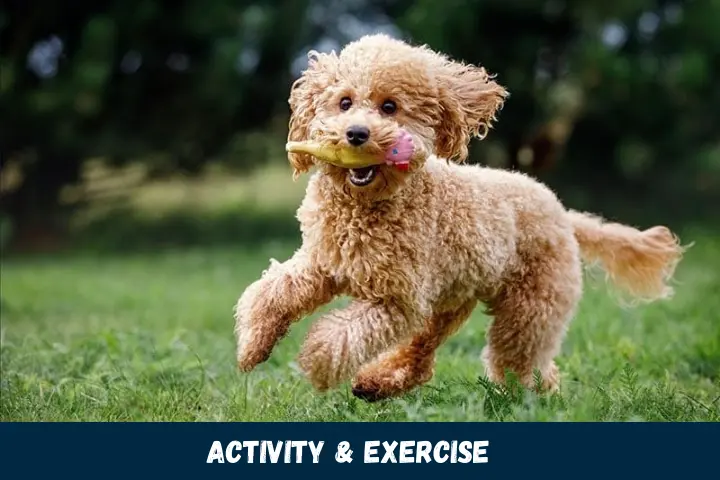
All poodle varieties are working maltipoo dog breeds developed for high-endurance activities in water and land. Thus vigorous daily exercise is non-negotiable for physical and mental health! Follow these tips:
- Puppies under 18 months require brief, gentle exercise to protect developing joints. Prioritize free play and training not forced running.
- Adults need 30-60 minutes of intensive daily exercise via brisk leashed walks, running beside bicycles, hiking, swimming, fetch games, flirt pole play, etc. Mental stimulation should also be incorporated.
- In lieu of adequate activity, poodles often develop anxious behaviors like nuisance barking, furniture chewing, hyperactivity, and aggression. Exercise reduces anxiety.
- Games of tug, competitive fetch sessions, and canine athletics like agility provide healthy physical and mental stimulation.
- Outdoor access to safely run and self-exercise supervised is ideal. But urban poodle owners can meet exercise needs via daily jogs/walks, indoor play, and enriching toys.
Mastering Poodle Coat Care
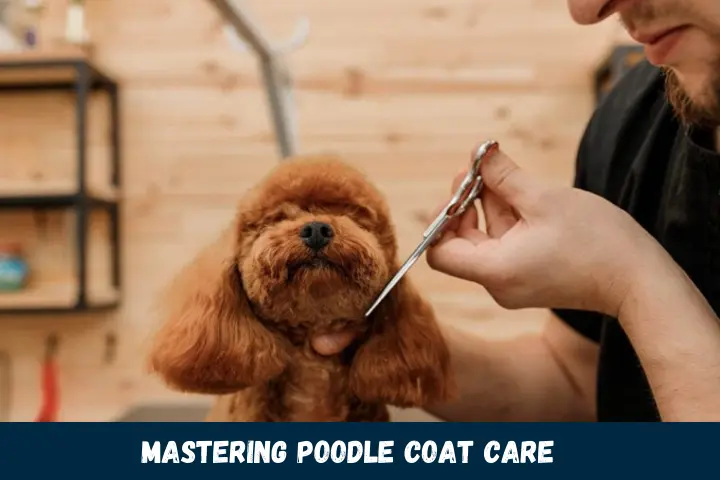
All poodles sport a thick, dense curly single coat that sheds minimally, making them relatively hypoallergenic. But their coats require considerable upkeep to prevent painful matting and skin issues. Follow these grooming tips:
- Thoroughly brush poodle coats two to three times weekly to lift dirt and distribute protective skin oils while preventing painful mats. Slicker brushes and stainless steel combs are ideal.
- Schedule full grooming sessions with a professional groomer every four to six weeks to trim overgrown hair and neatly clip coat textures optimal for your lifestyle. Poodles must get haircuts!
- For pet poodles, utilize easy-care shorter clips like lamb clips for low maintenance. Show poodles require more specialized styling.
- Bathing every two to four weeks using an oatmeal-based moisturizing shampoo ensures skin and coat health. Thoroughly rinse and air dry coats whenever possible.
- Carefully dry moisture between toes, inside ears and skin folds after baths, swimming or rain to prevent yeast or fungal infections prone in folds and moist crevices.
Final Thoughts
Whether it’s the regal elegance of a standard, the sprightly energy of a miniature, or the puppy-like charisma of a toy poodle, no breed offers quite as much versatility and appeal as Poodles. Match your lifestyle and preferences to your ideal poodle variety, then get ready for a lifetime of intelligence, zeal for life, humor, and devotion from your new curly canine companion!


